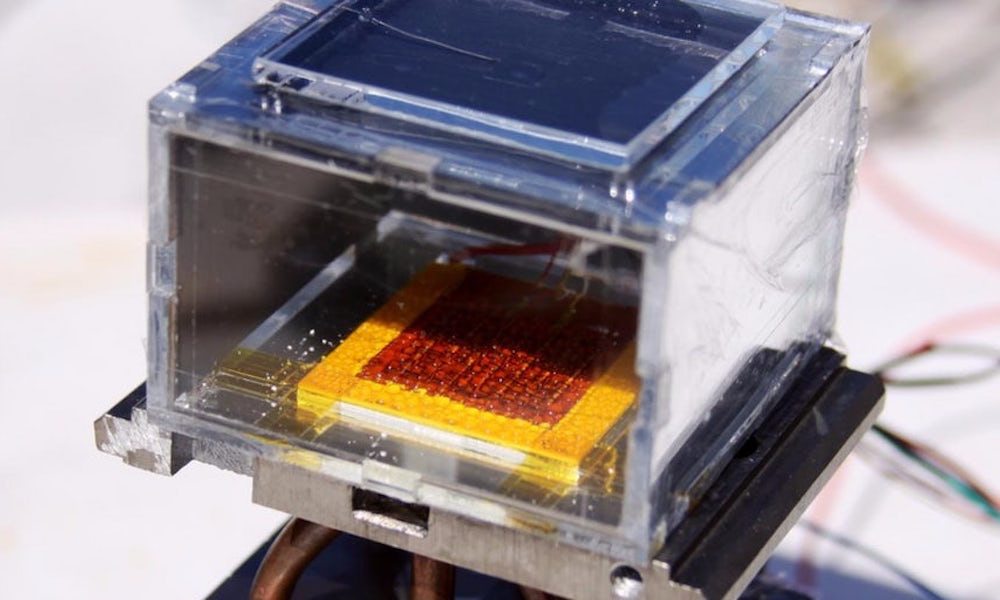This Box Creates Drinking Water from Nothing But Air and Sunlight

Image via Evelyn Wang, MIT
Toggle Dark Mode
A team of researchers have created a device that can literally make water out of thin air. The device is solar-powered, and can be used to produce clean drinking water in essentially any climate — even in the middle of the desert, according to the team, which is made up of researchers from both the Massachusetts Institute of Technology and the University of California at Berkeley. The researchers first published a paper explaining the device in Science last week.
“I’m most excited about being able to realize a functioning device in these remote areas and to be able to provide clean water to all the people who need it,” Evelyn Wang, an MIT engineering professor and co-author of the paper, told CNN.
The device is essentially a cube about the size of a tissue box, equipped with a layer of what’s called a metal-organic framework (MOF). This MOF acts as a sponge, capturing as much water from the air and rain as possible when the box is actually open. The box can then be closed and exposed to the sun, which heats up the MOF, releasing water vapor. Finally, this vapor is converted into cool clean drinking water via a condenser — even in hot climates.
This climate aspect of the team’s device is especially important. While similar atmospheric water generators already exist, the researchers’ device is much more energy-efficient and can work in drier and hotter climates. As for how much water the device can actually produce, it’s capable of collecting around 2.8 liters of water per kilogram of MOF — even in environments with a humidity level as low as 20 percent.
Other devices need humidity levels as high as 50 percent to work, whereas this new invention is tailor-made to work in dry and hot climates like Northern Africa and parts of India. For those without access to electricity, the device runs entirely on energy pulled from the sun. “We can deploy (these) devices in those types of regions, where all they need is this device and sun,” Wang told CNN.
The prototype device is currently just a “proof of concept” to show off its capabilities. The key to getting the device into the real world is scaling up — requiring MOF materials to be produced in larger quantities. That’s not a lofty goal, however: manufacturers have produced large quantities of MOF before, Wang added. Similarly, whereas the prototype is a relatively small box, the final product should be about the size of a suitcase, and is expected to be able produce enough drinking water for a family of four.






